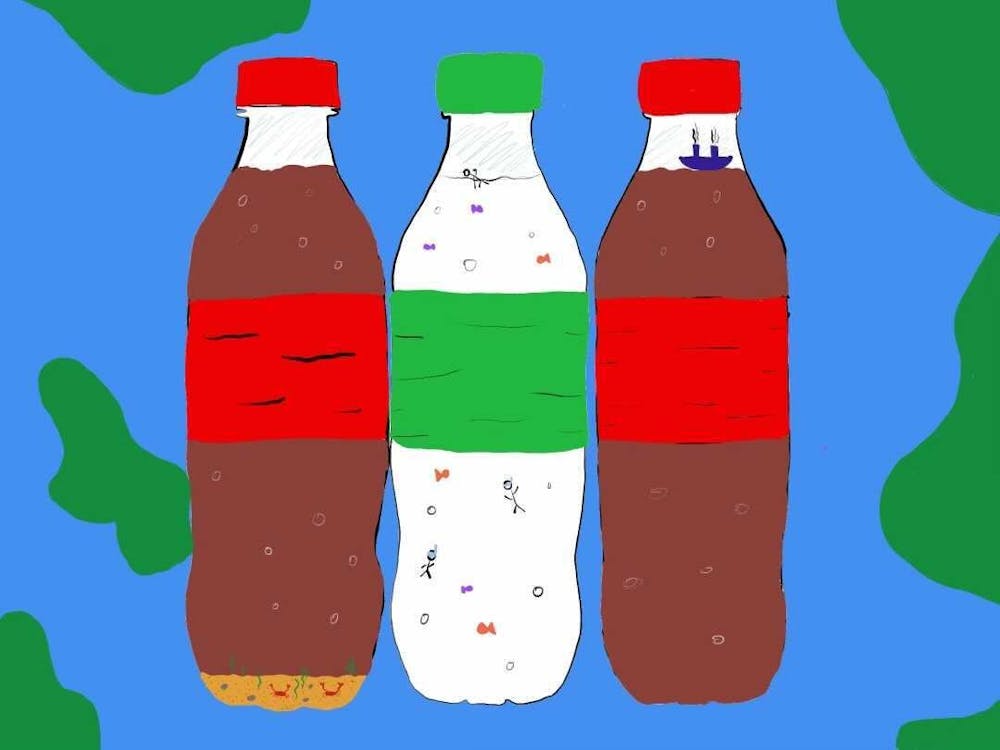In January, journalist A.J. Jacobs attempted to go a day without using plastic and found that within the first few seconds of waking up, he failed. His feet had landed on a carpet made of plastic nylon fibers as he got out of bed. His journey reflected that Americans rely on plastic like it's an addiction – we can’t even go a day without it, let alone a couple minutes.
Just by looking at my desk, I can see my plastic coffee cup with a plastic straw, my plastic phone case, my phone itself that has plastic parts within it, my plastic Nalgene water bottle and my laptop that has plastic parts in it. What about other people’s desks? Similar plastic items can probably be found there as well.
Individually, we rely on plastic so much already, so changes in our own lives could reduce the amount of waste globally, right?
[Related: Sustainable cleaning tips for college students]
We have always been taught that recycling is a necessity for the survival of our planet, and that little by little, reusing plastic could reduce our own carbon footprints. However, the recycling process is more strict than I had initially thought. Nearly 1.2 million plastic bottles are used each minute, adding to the 380 million metric tons of plastic being produced yearly. Only 9% of the amount of plastic produced each year is recycled, leaving the rest of the 91% to sit in landfills.
A lot of the time, putting the wrong plastic in a recycling bin can cause the entirety of the trash to be put in a landfill. Recycling can be complicated because of the many different kinds of plastics used and the different machinery needed to put them through the recycling process.
Some reusable water bottles still take plastic to make. Even if the plastic is biodegradable, it is more expensive than regular plastic and has been found to break down into smaller microplastics. This is a problem because microplastics are harder to clean up than whole plastic bags or bottles, and they have even been found in the food we eat and the water we drink.
It’s enough to make a person go crazy, thinking about just how much we rely on destructive products like plastic.
[Related: IU students discuss desire for more recycling education]
Plastic has become too much of a part of the Earth’s everyday life that a world without it seems out of reach. Especially for students, it is harder to use more natural resources because they cost more than single-use items. But, it’s not impossible.
Some people have begun using cloth bags when grocery shopping to reduce their usage of plastic bags or have begun using compost bins rather than throwing out food scraps.
Bamboo toothbrushes and thrifting have recently gained attention because they reduce the amount of plastic used. Bamboo sticks have been around for hundreds of years and can be composted after usage. Thrifting is good for the environment because it reduces the amount of clothing thrown into landfills.
We can’t change the fact that the world has spent hundreds of years relying on plastic, to the point where we use it moments from when we step out of bed. Until we can create change globally, we do, however, have control on how much plastic we let into our own lives. Individually reducing the amount of single-use plastics can increase the chances of making a positive change to the environment for future generations..
Carolyn Marshall (she/her) is a sophomore majoring in media studies with a focus in TV, film and digital production with a minor in English. Her passions include social justice and environmental sustainability.






